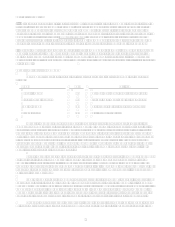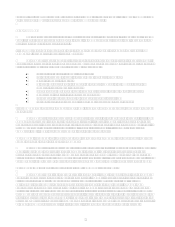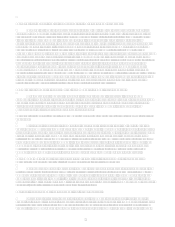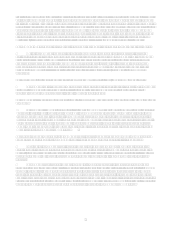Nutrisystem 2003 Annual Report Download - page 18
Download and view the complete annual report
Please find page 18 of the 2003 Nutrisystem annual report below. You can navigate through the pages in the report by either clicking on the pages listed below, or by using the keyword search tool below to find specific information within the annual report. 16
an analysis of the cumulative level of pretax profits over the past three years, projected levels of profits, schedule of
reversal of deferred taxes, and tax strategies. As a result, the valuation allowance was eliminated, a deferred tax asset
was recorded on the consolidated balance sheet and an income tax benefit was recorded in the statement of operations.
In future periods, the Company will provide for income taxes at a rate equal to the combined federal and state
effective rates. Subsequent revisions to the estimated net realizable value of the deferred tax asset could cause the
Companys provision for income taxes to vary significantly from period to period. For the year ended December 31,
2003, the Company recorded an income tax benefit of $3,397.
Results of Operations
Revenues and expenses consist of the following components:
Revenues. Revenues consist primarily of food sales. Food sales include sales of food, supplements, shipping
and handling charges billed to customers and sales credits and adjustments, including product returns. No revenue is
recorded for food products provided at no charge as part of promotions.
Cost of Revenues. Cost of revenues consists primarily of the cost of the products sold, including the write-off of
obsolete packaging and product, incoming and outgoing shipping costs, charge card discounts and packing material.
Cost of products sold includes products provided at no charge as part of promotions. Cost of sales includes the fees paid
to independent distributors.
Marketing Expense. Marketing expense includes advertising, marketing and promotional expenses and payroll
related expenses for personnel engaged in these activities. The Company follows the American Institute of Certified
Public Accountants (AICPA) Statement of Position 93-7, Reporting for Advertising Costs to account for Internet
site-linking arrangements. Internet advertising expense is recognized based on either the rate of delivery of a guaranteed
number of impressions over the advertising contract term or on a cost per customer acquired, depending upon the
payment terms. All other advertising costs are charged to expense as incurred.
General and Administrative Expenses. General and administrative expenses consist of payroll and related
expenses for administrative, information technology, fulfillment and customer service personnel, facility expenses, web
site development costs, professional service fees and other general corporate expenses.
New Program Development. New program development includes various costs charged by third parties
associated with the creation of the Companys new NutriSystem Nourish diet program, including new package design
costs and development of program specifications.
Interest Income/Expense. Interest consists of interest income earned on cash balances, net of interest expense.
Income Taxes. Effective with the merger on September 27, 1999 (see Background for discussion), the
Company became subject to corporate level income taxes. No income tax benefit on the excess of the tax basis of assets
over the financial reporting carrying amount was recorded from September 1999 to March 2003 in light of the historical
taxable levels of income (loss), the uncertainty of future operating results, tax planning strategies, and the expiration date
of net operating loss carryforwards. In the second quarter of 2003, management determined that recognition of the
benefits related to deferred tax assets was more likely than not based on an analysis of the cumulative level of pretax
profits over the past three years, projected levels of profits, schedule of reversal of deferred taxes, and tax strategies. As
a result, the valuation allowance was eliminated, a deferred tax asset was recorded on the consolidated balance sheet and
an income tax benefit was recorded in the statement of operations.
Overview of the Direct Channel
The Company began selling directly to consumers when it launched its web site on October 15, 1999. In 2003,
the Direct channel represented 65% of the Companys net revenues. For the Direct channel of distribution, the
Companys primary financial objectives are to generate growth while maintaining profit margins. The Company
measures growth in terms of the number of new customers, revenues per customer and total revenues. A new customer
is defined as a first time purchaser through the Direct channel. Profit margins are measured in terms of gross margin
(revenues less cost of revenues as a percentage of revenues) and total advertising and marketing expense as a percentage
























